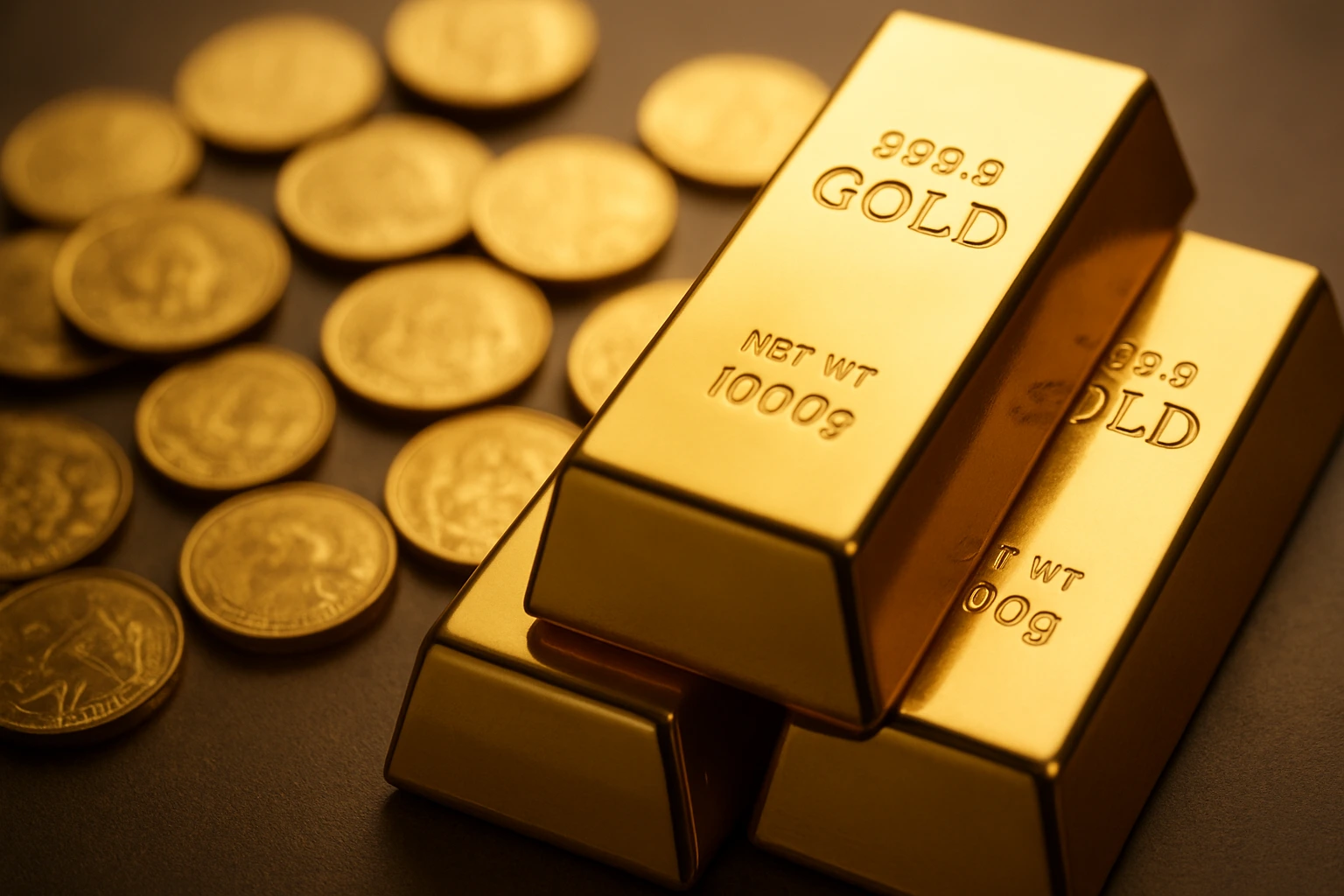Gold prices surged past $4,300 an ounce on Friday, heading for their largest weekly gain since December 2008, driven by rising geopolitical tensions, expectations of US interest rate cuts, and lingering concerns about regional banking stability.
Spot gold rose 0.2% to $4,332.17 per ounce as of 1100 GMT after reaching an intraday record of $4,378.69. US gold futures for December delivery climbed 1% to $4,345.90.
This week, the precious metal is on track for roughly an 8% gain, marking its most significant weekly advance in nearly two decades, and temporarily approached levels not seen since the collapse of Lehman Brothers fueled the global financial crisis in September 2008.
Gold, traditionally seen as a hedge against uncertainty, has benefited from a combination of economic and geopolitical factors.
Investors are increasingly pricing in a 25 basis point interest rate cut at the Federal Reserve’s upcoming October meeting, followed by another potential reduction in December.
Such cuts generally make non yielding assets like gold more attractive. Meanwhile, signs of stress at US regional banks have unsettled financial markets.
Investors have moved away from riskier assets and sought refuge in gold and other safe haven investments. Geopolitical tensions have further bolstered demand, particularly amid US & China disputes over rare earth exports and trade policy.
“Rate cut expectations, combined with geopolitical uncertainty and banking sector concerns, are creating a highly supportive environment for gold,” said Alexander Zumpfe, a precious metals trader at Heraeus Metals Germany.
He added that short term price consolidation is possible given current overbought conditions. Gold’s relative strength index, a technical indicator, currently stands at 88, signaling that the metal is overbought.
Analysts note that while strong gains may continue, investors should be prepared for possible near term retracements. Michael Haigh, global head of commodities research at Societe Generale, said, “Robust inflows into gold backed ETFs are providing consistent upward pressure on prices.
Investor sentiment remains strong despite high valuations.” Gold’s rise this week contrasts with movements in other precious metals.
Spot silver declined 0.4% to $54 per ounce after reaching a record high of $54.47. Platinum and palladium also posted losses, with platinum dropping 4% to $1,644.75 and palladium down 2.2% to $1,578.07.
SPDR Gold Trust, the world’s largest gold backed exchange traded fund, reported holdings of 1,034.62 tonnes, the highest since July 2022. Analysts say that ETF demand remains a significant driver of price momentum.
In Asia, gold demand has surged in local markets. In India, domestic gold prices reached ₹131,699 per 10 grams, with premiums up to $25 per ounce, the highest in over a decade.
Retail buyers and jewelers alike were stocking up ahead of the festive season, while market participants reported increased smuggling due to shortages and high prices.
China’s bullion market showed mixed signals, with physical gold trading at a discount of $20 to $66 relative to international benchmarks.
Dealers in Hong Kong and Singapore reported stable demand, while Japan’s market saw modest premiums. Across the region, consumer interest remained resilient despite record high prices.
Financial institutions have revised their gold price forecasts upward. HSBC raised its 2025 average forecast to $3,455 per ounce, projecting gold could reach $5,000 per ounce in 2026 due to ongoing geopolitical risks and increased investor participation.
Analysts expect volatility to remain elevated, but many market participants are likely to continue holding gold as a hedge against economic uncertainty.
Other institutions, including Bank of America and Societe Generale, echoed the bullish sentiment, citing central bank purchases, ETF inflows, and geopolitical tensions as factors supporting continued demand.
Gold’s climb above $4,300 underscores its enduring role as a safe haven investment during periods of market uncertainty.
While technical indicators suggest the possibility of short term corrections, macroeconomic conditions, central bank policies, and geopolitical risks appear favorable for sustained interest in the metal.
Investors are expected to closely monitor developments in global finance and trade relations as they evaluate the path forward for gold prices.

